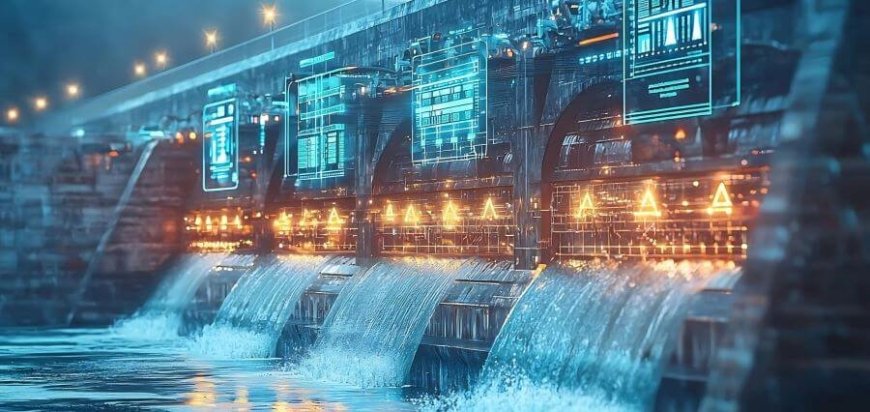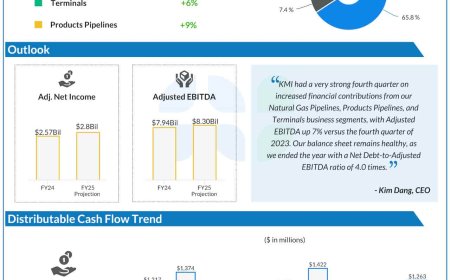Optimizing Water Resources Management
Harnessing the Power of Data Analytics The intersection of data analytics and water resource management brings extraordinary opportunities for conservation and efficiency. With the emergence of climate change and increasing water scarcity, modern water utilities and resource managers are now using advanced analytics to transform vast amounts of data into actionable insights that will help […] The post Optimizing Water Resources Management appeared first on Insights Success.

Harnessing the Power of Data Analytics
The intersection of data analytics and water resource management brings extraordinary opportunities for conservation and efficiency. With the emergence of climate change and increasing water scarcity, modern water utilities and resource managers are now using advanced analytics to transform vast amounts of data into actionable insights that will help them manage their water resources in more sustainable and resilient ways.
The Data Revolution in Water Management
A utility water company creates a huge amount of data through sensors, smart meters, and weather stations, along with the customer information system. In that case, when such data is properly utilized, much insight is gained regarding consumption patterns and performance as well as the environmental impacts of the infrastructure. Advanced analytics nowadays process information in almost real-time, which enables proper resource allocation through minimizing waste by water managers.
Predictive Analytics Infrastructure Management
This holds high promise, one of the leading water management applications using data analytics-predictive infrastructure maintenance. By analyzing historical performance data, patterns of weather, and usage, utilities can foresee problems before they occur. Machine learning algorithms tend to identify tiny patterns showing some potential failing, ensuring the maintenance team addresses this in a proactive manner and not reactive in nature.
These predictive abilities have been very helpful in leakage detection and prevention. Smart sensors spread across the network monitor pressure, flow rates, and water quality. In combination, the data reveals leaks with surprising accuracy, thereby reducing loss and saving the infrastructure from costly damage.
Demand Forecasting and Supply Optimization
Data analytics has changed demand forecasting in water management. It is now possible to predict utilities’ water demand with unprecedented accuracy by analyzing past consumption patterns, demographic data, weather forecasts, and seasonal trends. Better forecasting allows utilities to operate their reservoirs effectively and optimize treatment plants.
Advanced analytics platforms also allow for real-time supply adjustments based on the prevailing demand patterns. The automated system can, for instance, adjust pressure and flow rates during peak usage periods to maintain stable supplies while minimizing energy consumption. This dynamic response capability helps utilities maintain service quality while reducing operational costs.
Customer Engagement and Conservation
Recent developments are changing how utilities interact with large customer populations. Smart-metering systems have detailed records of consumption that utilities now use to give customers informative insights and make conservation-related recommendations. A few can even allow the customer direct access through mobile apps: they monitor usage in real time, determine conservation goals, and trigger alerts when potential leaks occur.
These engagement tools have been shown to be effective for water conservation. When customers are educated about their consumption patterns and receive targeted conservation tips, they are more likely to adopt water-saving behaviors. Some utilities report a reduction in residential water consumption of up to 15% following such programs.
Environmental Impact Assessment and Management
Data analytics plays a crucial role in understanding and managing the environmental impacts of water resource management. Analyzing data on water quality, weather, and ecosystem indicators allows utilities to better predict and mitigate environmental risks. The most important application is for watershed health management, which ensures that extraction rates are sustainable.
Advanced modeling tools now include climate change scenarios to assist utilities in forward planning. These models focus on factors such as patterns of changing precipitation, general temperature trends, and populations to guide long-term infrastructural planning and resource deployment strategies.
Challenges and Future Directions
Despite the huge potential of data analytics in water management, several challenges persist. Data quality and standardization issues can impede analysis efforts, while cybersecurity concerns require constant attention. Many utilities also face technical skill gaps as they transition to more data-driven operations.
Even more technologies in the future can bring better capabilities to improve water resource management capacity. Artificial intelligence and blockchain technologies are promising tools where AI-powered systems will automatically make complex decisions while blockchain technology can help strengthen data security and trading rights to water.
Integration with Smart City Initiatives
Water management analytics increasingly integrate with broader smart city initiatives. This integration enables coordination between different urban systems, such as energy management and transportation networks. The resulting synergies can improve overall resource efficiency and urban sustainability.
Some cities now use integrated platforms that combine water management data with other municipal services. These systems enable coordinated responses to various urban challenges, from flood prevention to drought management.
Conclusion
Data analytics has become a necessity in modern water resources management, offering tools and insights that make water systems more efficient, sustainable, and resilient. The potential for innovation remains vast as technology continues to evolve and data availability increases. Success in implementing these solutions requires ongoing commitment to data quality, security, and workforce development.
The future of water resource management, therefore, is the continuing evolution and application of capabilities in data analytics. When these technologies are embraced by water utilities and resource managers, such as when appropriate implementation issues are addressed, they can provide better service and preservation opportunities for this crucial resource by serving future generations.
The post Optimizing Water Resources Management appeared first on Insights Success.











































